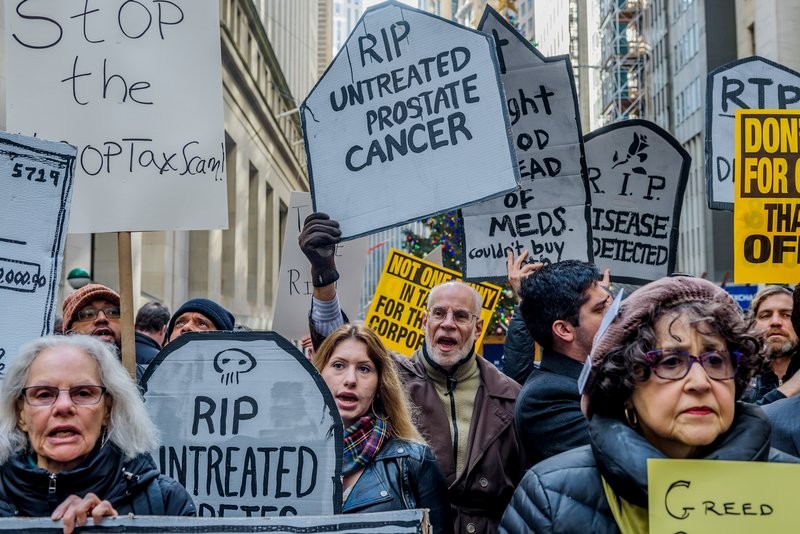2018年美国企业面临的三大医保挑战

|
我曾经说过,美国医疗系统的变革速度太慢了,我不需要魔法水晶球也能知道这个系统将往何处去。但是现在,医疗系统和其他行业一样,其变革的速度也在日益加快,我们越来越难以预测下一步会发生什么。不过在工作中,我经常会听到大企业和医疗采购商的反馈,因此,我愿意自信地分享我对2018年的一些预测,以及美国企业及其他购买医保服务的机构所面临的挑战。 私营部门的支付改革将持续取得进展,对其影响的质疑也将继续 美国新任的卫生与公共服务部部长还没有任命,所以暂时还没有迹象表明特朗普政府对供应商支付改革的态度空间是支持、反对还是中立。虽然存在这种不确定性,但商业支付者还是强烈支持继续推进医保服务领域的支付改革。 根据我的公司进行的调查显示,目前约有50%支付给医疗供应商的费用与他们的服务质量是有关联的。有些支付的费用也对效率起到了激励作用。商业医保计划的大雇主客户们迫切地希望继续保持压力,推动支付改革的实施,以期进一步提高医疗服务的质量,减轻医疗支出对普通雇员的负担。因此,支付改革很可能会继续下去。 然而这些大雇主客户也面临着一项持续的挑战,那就是他们没有足够的证据支持这些试验是否值得保留、调整或是进一步扩展——或者干脆完全放弃。像Medicare和Medicaid这样的公立医保体系会定期对其项目进行评估并公布结果,但私营部门的参与者往往对试点情况相当保密。也就是说,虽然医疗界的变革速度不可谓不快,但雇主们对哪种医保计划真正适用于自己,仍然不甚了了。所以雇主必须自己索要这些信息。除了在医疗服务供应商中引入更多竞争元素,以及对医疗服务价格进行调控以外,最有希望提高医疗质量、降低医疗价格的方法或许就是支付改革了。 雇主本身必须付出努力来引导消费者选择高质量且较平价的医疗供应商,然而如何教育消费者,以及如何建立正确的激励机制,却是一个大问题 跟十年前相比,现在的雇主和消费者似乎都意识到,这个国家的医疗体系其实是非常善变的。为了避免医保支出浪费,雇主们也设计了一系列福利机制,鼓励雇员选择更高价值的医疗供应商。所谓更高价值,指的是以更低价格获得同等质量的服务,或是以同等价格获得更高质量的服务,甚至是以更低价格获得更高质量的服务。一旦赶走了那些价格高于市场竞争水平的供应商,将患者送到了正确的医疗供应商那里,无论是雇主和消费者显然都会获益。 据韦莱韬悦资询公司(Willis Towers Watson)的一项调查显示,超五成的员工人数在1000人以上的雇主表示,他们计划在2019年以前,为员工提供“高绩效的供应商网络”——也就是剔除了价格虚高的供应商之后的医疗服务选项。消费者不惜选择余地受限,也要选择低溢价产品,这充分说明了美国人是愿意牺牲选择权来换低价位的。 不过任何福利机制的设计都需要大范围的沟通才能确保它的效率。当雇主提供了这些创新设计(比如高绩效供应商网络,即一种在消费者选择了高价值供应商时,能够降低消费者的成本分摊的分级网络;或是某种高风险高费用的“卓越计划”等)时,他们依然需要与雇员反复沟通,提供导向支持,降低成本分摊,才能确保员工选择他们的这些创新选项。 高扣除额医保方案热度渐退,但如何应对它们带来的意外后果却显得愈发重要 着眼于即将于2020年生效的“凯迪拉克税”(一种计划针对高额医保方案征收的消费税),为了省钱和鼓励雇员理性购买医疗服务,很多美国企业纷纷推出了高扣除额医保方案,现在这方面的热度有些减退了。这种方案之所以会被设计出来,是因为雇主认为,如果雇员必须得先花自己的钱购买医疗服务,达到一定扣除额度后才能报销,那消费者就会审慎考虑一些不必要的医疗支出。然而事实证明,高扣除额医保方案的消费者削减了所有医疗服务的支出,甚至包括他们确实需要的那些服务。 要想解决这些意外的负面后果,就需要对此类方案进行调整,这当然是有难度的,必要时甚至需要国税局出台一些新规。比如降糖药是糖尿病人每日不可或缺的药物,我们是否可在此类医保方案中将降糖药的门槛定得低一些?通过不断修改调整,我们还是可以取得一些进步的,不过可以预见,在这方面,磕磕绊绊仍然是免不了的。 这些趋势和挑战不免会让你们从公司的核心业务中分心。但考虑到医保支出对企业士气和利润的影响之大,雇主们最好从新年伊始就睁大眼睛,保持对这个问题的关注。(财富中文网) 本文作者是Catalyst for Payment Reform公司的执行董事。 译者:贾政景
|
I used to say that the health care system changed so slowly, I didn’t need a crystal ball. Now, with the pace of change quickening as it has in other industries, it’s getting harder to anticipate what’s next. But in hearing directly from large employers and other health care purchasers every day, I feel confident in sharing a few predictions about 2018 and the challenges they may pose for employers and other organizations buying health care. There will be continued progress on payment reform in the private sector, along with continued questions about its impact As we await a new Secretary of Health and Human Services, we have little indication from the Trump Administration about whether it will promote provider payment reforms, impede them, or remain neutral. Despite this uncertainty, commercial payers appear strongly committed to continuing reforms to how they pay health care providers. According to research by my organization, Catalyst for Payment Reform, around 50% of payments to health care providers today are linked to the quality of care they deliver. Some of those payments also reward efficiency. The large employer customers of commercial plans are eager to keep the pressure on for experimentation with payment reform in hopes that it will improve quality of care and affordability. As a result, payment reform is likely to continue. The continued challenge employers face, however, is that they have minimal evidence to support whether these experiments are worth keeping, altering, or expanding—or even abandoning. While the Centers for Medicare and Medicaid Services evaluates its programs and shares results publicly, private sector players keep results close to the chest. This means that despite continuing rapid changes, employers still won’t know much about which strategies work. Employers must demand this information. Outside of finding ways to introduce more competition among health care providers, or regulating health care prices, payment reform may offer the greatest hope for improving health care quality and affordability. Employers and payers will work hard to direct consumers to high-quality, more affordable health care providers, but educating consumers and creating the right incentives will be a heavy lift Compared to a decade ago, both employers and consumers now seem to understand that health care in this country is highly variable. As employers look for ways to eliminate wasteful spending, they are implementing a variety of benefit designs to encourage employees to seek care from higher-value health care providers. Higher value can either mean the same quality for a lower price, higher quality for the same price, or higher quality and lower price. By eliminating providers with higher-than-competitive prices and sending patients to providers who get care right the first time, both employers and consumers may win. In fact, more than 50% of employers with at least 1,000 employees say that they will offer “high-performance provider networks”—health plan options that eliminate overpriced providers—by 2019, according to a survey by Willis Towers Watson. If the selection of lower-premium products with restricted provider choice by consumers in public exchanges is any indication, Americans appear more willing to trade off choice for affordability. But any new benefit design requires extensive communication to be effective. When employers offer these innovative designs, such as high-performance provider networks, a tiered network that reduces cost sharing when consumers choose higher-value providers, or a centers of excellence program for high-risk or expensive procedures, they find they need to repeat communications, provide navigation support, and reduce cost sharing to ensure employees choose these options. Implementation of high-deductible health plans may plateau, but countering their unintended consequences will grow in importance In anticipation of the Cadillac Tax—an excise tax on high-cost health plans scheduled to take effect in 2020—to save money, and to activate employees as active consumer-shoppers of health care services, employers turned in droves to offering high-deductible health plans, though this trend has slowed. The idea is that when employees need to spend their own money for health care services up until a deductible, they will think twice about seeking frivolous care. Unfortunately, it turns out that consumers in high-deductible plans cut back on all services, including those they need. Finding ways to counter this negative, unintended consequence will require adding nuance into these plans, which will prove tricky and, in some cases, require new regulations from the IRS. For example, how do we lower barriers for diabetics in these plans who should be encouraged to buy the medications that help keep their blood sugar under control? With tinkering we can make progress, but should anticipate bumps in the road until we get it right. These trends and challenges likely provide a frustrating distraction from your company’s core business. But given the large role that health care costs play in your company’s bottom line, it’s best to enter the new year with eyes wide open. Suzanne F. Delbanco is executive director of Catalyst for Payment Reform. |













